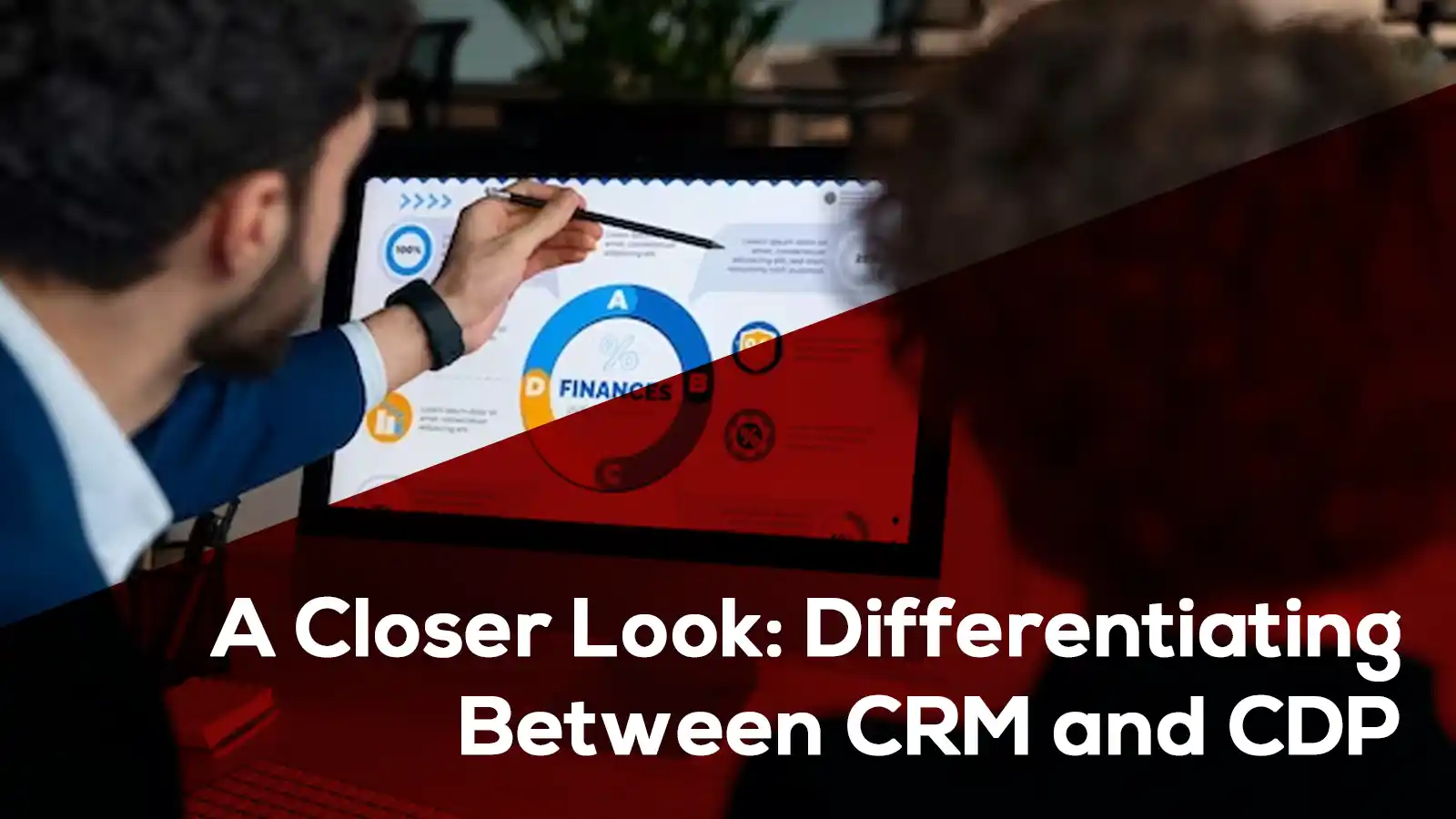Introduction
Words like CRM (Customer Relationship Management) and CDP (Customer Data Platform) are frequently tossed around in the business world. But what exactly do these terms mean, and how do they differ?
Let’s take a closer look at CRM and CDP to understand their roles and functionalities, and why they are both crucial for businesses aiming to build meaningful and lasting relationships with their customers.
Understanding CRM: Building Relationships One Interaction at a Time
CRM, or Customer Relationship Management, is a technology that focuses on managing interactions with current and potential customers. Its primary goal is to improve relationships, streamline processes, and increase profitability. A traditional CRM system is designed to capture and store customer data, track customer interactions, and manage sales, marketing, and customer service processes.
Key Features of CRM
- Contact Management: CRM systems store and organize customer information, including contact details, communication history, and preferences.
- Sales Automation: Automate repetitive sales tasks, track leads, and manage the sales pipeline more efficiently.
- Marketing Automation: Create targeted marketing campaigns, track customer engagement, and measure the effectiveness of marketing efforts.
- Customer Support: Provide better customer service by managing support tickets, tracking customer issues, and ensuring timely resolutions.
- Reporting and Analytics: Gain insights into customer behavior, sales performance, and overall business metrics.
Understanding CDP: Unifying Customer Data for a Holistic View
On the other hand, a Customer Data Platform (CDP) is a more recent addition to the customer data management landscape. Unlike CRM, a CDP is designed to centralize and unify customer data from various sources, creating a comprehensive and unified customer profile. The focus of a CDP is to provide a holistic view of the customer, enabling personalized and targeted marketing efforts.
Key Features of CDP
- Data Integration: CDPs gather and integrate customer data from multiple sources, such as websites, mobile apps, and offline interactions, creating a single customer profile.
- Unified Customer Profile: Create a centralized and comprehensive customer profile that includes demographic information, behavioral data, and transaction history.
- Real-time Data Updates: Ensure that customer profiles are continuously updated in real-time, allowing businesses to stay informed about the latest customer interactions.
- Audience Segmentation: Segment customers based on specific criteria, enabling highly targeted and personalized marketing campaigns.
- Integration with Marketing Tools: Seamlessly integrate with various marketing tools to enable more personalized and effective marketing strategies.
Key Differences Between CRM and CDP
Scope of Data
CRM: Focuses on managing customer interactions and transactions.
CDP: Centralizes and unifies customer data from various sources, providing a more holistic view.
Functionality
CRM: Primarily used for sales, marketing, and customer service processes.
CDP: Emphasizes creating a unified customer profile for personalized marketing efforts.
Data Usage
CRM: Utilizes customer data for managing relationships and improving business processes.
CDP: Leverages customer data for creating targeted and personalized marketing campaigns.
Real-time Updates
CRM: Often updates customer data periodically.
CDP: Focuses on real-time updates to ensure the most current customer information.
Why Both CRM and CDP Matter
While CRM and CDP serve different purposes, they complement each other to provide a comprehensive customer engagement strategy. CRM is essential for managing day-to-day customer interactions, tracking sales, and ensuring efficient customer service. On the other hand, a CDP enriches CRM data by centralizing information from various touchpoints, allowing businesses to create highly personalized and targeted marketing campaigns.
Conclusion
In the ever-evolving landscape of customer relationship management, both CRM and CDP play pivotal roles. Businesses aiming for customer success should not see them as competing technologies but rather as complementary tools. By leveraging the strengths of both CRM and CDP, businesses can build stronger, more meaningful relationships with their customers, ultimately driving growth and success in today’s highly competitive market.
Frequently Asked Questions (FAQs) about Differentiating Between CRM and CDP
1. What is the primary purpose of a CRM system?
A CRM (Customer Relationship Management) system is designed to manage interactions with current and potential customers. Its main focus is on improving relationships, streamlining processes, and increasing profitability through effective sales, marketing, and customer service management.
2. How does a CRM system help businesses in managing customer relationships?
CRM systems assist businesses by organizing and storing customer information, automating sales tasks, facilitating targeted marketing campaigns, managing customer support, and providing valuable insights through reporting and analytics.
3. What sets a CDP apart from a traditional CRM system?
While CRM focuses on managing customer interactions, a Customer Data Platform (CDP) centralizes and unifies customer data from various sources, creating a comprehensive and unified customer profile. CDPs emphasize providing a holistic view to enable personalized and targeted marketing efforts.
4. What are the key features of a CRM system?
Key features of a CRM system include contact management, sales automation, marketing automation, customer support functionalities, and reporting and analytics capabilities.
5. How does a CDP contribute to a unified customer profile?
A CDP gathers and integrates customer data from multiple sources, such as websites, mobile apps, and offline interactions. This centralized data is then used to create a unified customer profile that includes demographic information, behavioral data, and transaction history.
6. Can a CRM system be used for personalized marketing efforts?
While CRM systems focus on managing customer relationships and transactions, their capabilities for personalized marketing are limited compared to a CDP. CRM systems are more oriented towards day-to-day operations and customer interactions.
7. Why is real-time data updating important for a CDP?
Real-time data updates in a CDP ensure that customer profiles are continuously updated with the latest interactions and information. This allows businesses to stay informed about customer behavior and preferences in real time, enabling more effective and timely marketing strategies.
8. How do CRM and CDP complement each other?
CRM and CDP are complementary tools. While CRM is crucial for managing day-to-day customer interactions, tracking sales, and ensuring efficient customer service, a CDP enriches CRM data by centralizing information from various touchpoints. This combination enables businesses to create highly personalized and targeted marketing campaigns.
9. Can a business use either CRM or CDP or is it advisable to use both?
It is advisable to use both CRM and CDP, as they serve different purposes. CRM is essential for managing daily interactions and transactions, while a CDP provides a holistic view of customer data for personalized and targeted marketing efforts. Together, they create a powerful customer engagement strategy.
10. How can businesses choose between CRM and CDP for their specific needs?
The choice between CRM and CDP depends on the business goals. If the focus is on day-to-day customer interactions and operational efficiency, CRM is suitable. For a more comprehensive view of customer data and personalized marketing, a CDP is recommended. Ideally, both can be integrated for a robust customer engagement strategy.








